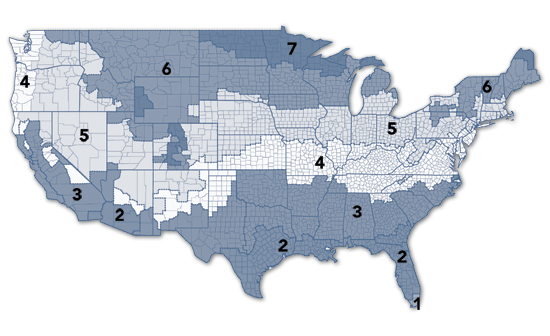Designed, Sealed, Delivered - IAQ and the Building Enclosure
The functions of each of these four systems are to provide inherent structural support, moisture control, temperature regulation, air pressure stability, thermal comfort to occupants, and integrity of the assembly over time. Altogether, the enclosure also affects ventilation and energy use within the building. While each of the four systems typically relies on different materials and details to achieve these ends, each is typically constructed of building products assembled in multiple layers. Each layer may serve one or more of the following critical performance purposes:
- Rainscreen or wearing surface. This is the exterior surface that is exposed to the elements.
- Drainage plane. Behind the wearing surface, a secondary provision is made for water to be captured and drain away harmlessly from the rest of the assembly.
- Air barriers. This layer keeps unwanted air infiltration from entering the building or the assembly.
- Vapor barrier. Preventing airborne moisture from penetrating the assembly and/or other locations in the building.
- Thermal barrier. Materials used to slow the transfer of heat through an assembly. In ideal situations, this thermal barrier is not interrupted by structure or other elements.
- Pressure boundary. A successful assembly will hold air back under pressure and not succumb to anticipated air pressure changes.
While the systems and layers may be thought of and designed individually, the goal of a welldesigned building enclosure is that all of these work together for the same purpose.
Building Location
Building enclosures can be expected to respond to moisture, humidity, temperature and air pressure changes but how they do so will be highly influenced on the geographic location of the building. As would be expected, the local climate plays a big part in how the enclosure performs. Different climates have been well documented in engineering maps that identify different climate zones for the U.S. The particular climate zone where a building is located not only identifies the thermal performance criteria for a given building, it also dictates the placement of particular performance layers in the enclosure. This is especially true in locating control layers such as the vapor barrier and the air barrier.
 |
Distinct climate zones have been determined in the U.S. in order to inform architects and others involved during the design of building enclosures. Zone 1 includes Hawaii, Guam, Puerto Rico, and the Virgin Islands. All of Alaska is in Zone 7, except for the following boroughs: Bethel, Dellingham, Fairbanks N. Star, Nome,North Slope, Northwest Arctic, Southeast Fairbanks, Wade Hampton, Yukon—Koyukuk Source: ASHRAE |
Control Layer Continuity
Beyond location, an important aspect of each of the performance layers is the fact that they should all be continuous around the entire enclosure. A simple visual test to determine this continuity of layers involves looking at a cross sectional drawing of a building with all of the appropriate layers identified. Using a pencil and starting at the lowest level, draw a line along each of the layers all the way along the perimeter of the enclosure to see if the layers are in fact continuous. If you need to stop because something interrupts the layer, like a floor slab, structure, or protrusion, then the designer can see that this interruption is actually a breach in the layer and needs to be corrected.
Of particular significance are “thermal bridges” which are defined as conditions which create a breach in the thermal barrier layer. Essentially these conditions allow heat to be transferred directly through a conductive building element where that heat transfer was not intended. For example, an uninsulated concrete floor slab that protrudes out past an insulated exterior wall allows heat to be transferred directly between the inside and outside of a building, thus creating an unwanted thermal bridge.
Even in a carefully designed building, failures in the various systems and material layers can happen. Typically such failures occur in three main ways. First, moisture penetration into an assembly can cause deterioration of materials along with mold and mildew growth. Second, structural gaps, movements, or slab failures can cause a building to have multiple systems breached to the point where the building becomes uninhabitable. Third, people in the building can be exposed to potential health hazards. This third failure is one that we will focus on in the remainder of this article since it is often misconstrued to be limited only to materials used in interior construction. In fact, there are also health exposure hazards from building enclosure materials.









